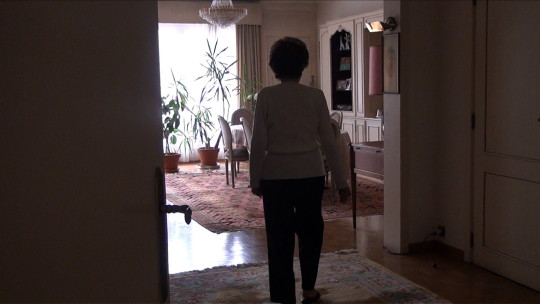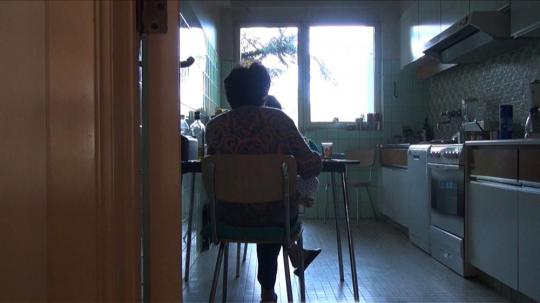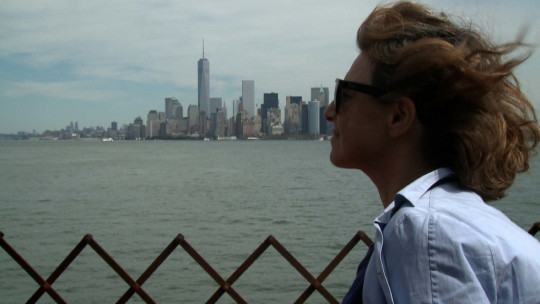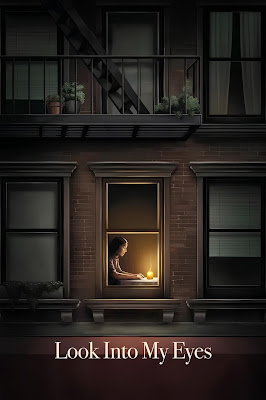There is going to be a lot here so stay with me.
Word out of where ever was that THE BRUTALIST was going to be the next greatest film ever made. Many people were calling it all the accolades that instantly get my panties in a bunch and make me want to get them in off the ledge. Other festivals, more accolades. Finally it hits NYFF and I buy a ticket for the last day it's screening because I want to hear what friends have to say and I want distance.
Word out of the NYFF press screening ran the gamut from it being really good (no one was genuflecting) to one person calling it a noble failure and dismantling it in terms of Paul Thomas Anderson films (specifically THE MASTER and THEIR WILL BE BLOOD). It was the politest shredding of a film I've ever heard
Calmed by that, I suddenly had hope I wouldn't hate the film from top to bottom. Grabbing Nate Hood, who truly had no idea what the film was other than it was 4 hours and in 70mm, I went to the theater to see it for myself.
The film is the story of a noted Hungarian architect who comes to the US after being displaced and being in the concentration camps of World War 2 and ends up hooked up with a rich family hoping to make a cultural center in the middle of Pennsylvania.
The first half surprised me. It was quite good. While not the American epic promised by many, I was curious where it went.
After the intermission (which is actually part of the film- there is a reel change moments after the 15 minutes run out) things pick up and.... OH HELL NO. The film became an absolute mess. It's disjointed, unfocused and in desperate need of another hour and a half. SO much is unsaid, until it is, that the film just collapses under it's bloated pomposity and pretentious bullshit.
At this point I'm going to give a warning I'm going to reference things in the film---like the ending--- so if you don't want to know surf away now. No skin off my back.
If you are going to be here for the long haul understand I'm not going to do this in a perfectly formed manner because, quite frankly there is too much wrong with the film that there is no point in ordering my grievances, I'm just going to get it all out as it hits me.
Okay that isn't fair. This isn't a total waste, its okay over all, but it's not the GREAT film promised straight faced by my fellow writers. If the film wasn't as celebrated as it is it might have gotten away with being a pretty okay over long drama that people had to chase to actually see instead of an Oscar hopeful that is going to leave the paying public scratching their heads.
I should point out that most of the problems that will be referenced here are to do with the second half.
Then again there is one thing that the first half suffers from as well as the second and that is bad acting and lack of characters. Yes, Adrian Brody is great. Yes he should be in the running for the Oscar, but everyone else, save the guy who plays the builder is either a badly written character or badly acted. And I do mean you, Guy Pearce. Normally you are wonderful even with an underwritten role, but you are just awful here. Without real characters we have no one and nothing to follow. I didn't care about anyone because there was no one to care about. (If you think otherwise please tell me who was well rounded-the wife? The Niece? Pearce's kids? No one is given enough to form a character)
This lack of having anyone to care about goes completely off the rails when Adrian Brody's character essentially disappears from the final 20 minutes of the film. Yes, he is kind of there is the epilogue, but he really isn't (it's some guy made to look like him).
Blame the problem on the choppy nature of the second part. We travel through time and space in a disjointed matter. Huge pieces of exposition are just not there. Plot threats and thematic threads come and go (I'll come back to this). It causes chaos in our ability have a handle on things. For example after Brody takes his wife to the hospital because of the overdose, she mentions that he confessed when they were tripping together. THE NEXT scene has her going to Pearce's house and she is, not in the wheelchair, but a walker. Where and how? More to the point because of the dialog Brody has been in New York with her for two days. Two days from when? Not the overdose, she wouldn't be there, much less walking into the house in a walker.
Part of the reason the characters don’t exist is the weird ass jumps in time. Because the second half careens through time no one is allowed to arc. They simply are the next thing. Look at the development of Brody’s wife. Ignoring the fact that she exists simply to say something that needs to be said or to be a person around which something can happen, we never are given a reason she becomes more and more assertive. She just is until suddenly she is walking into the house to reveal she knows what happened between Pearce and Brody. Where did it come from? And because there is no arcing in the second half Brody’s character simply thrashes from scene to scene in a different manic state.
I am bothered by the film’s relationship with heroin. Not that it’s there but how it uses it. For some reason I feel that too much of the plot is driven by it. I kept wanting to say a variation of the old Woody Woodpecker line “If woody had just gone to the police none of this would have happened.” Here it would be if Brody hadn’t used heroin so much of this wouldn't have happened. The drug simply becomes the way to have events happen such as the incident with Pearce, that Brody uses it to stop his wife’s pain, and the implication that his being so sick from it that his wife has to confront Pearce is asking too much of it to the point that it’s simple a deus ex machina. This film could not go forward if Brody's character wasn't a junkie.
The truth is the film fudges too much with the wife. Not only doesn't she arc but simply exists for a moment or a line. She speaks of talking to god and knowing everything about what Brody did, but we have no clue about it really. Later after her overdose she speaks of his confessions of all these things but there is no indication of what exactly other than the incident with Pearce when she walks into the house….
...and about that there is absolutely no indication about the depth it bothered him-other than the look when he and Pearce walk out of the cave. There is no indication that it bothered him so badly that his wife would have to step up and fix the problem.
If it isn’t clear the second half of the film is a real mess and the more I think about it the more I keep adding to this piece because the more I need to say how fucked it is. The film is riddled with all sorts of continuity plot and thematic questions particularly in the second half.
The biggest problem with the film is what is the film about? Yes I know Adrian Brody, but thematically? The film never makes a stand for anything.
Is it the immigrant experience? Maybe, but that disappears for chunk of the film. It doesn't matter he is an immigrant, more that he's crazy.
Is it life after the Second World War? The war comes and goes.
Is it a societal expose on class? Perhaps but it says nothing new.
Is it a look at being Jewish in America? Yes, but outside of the religious services and Israel the threads aren't always there. There doesn't seem to be a great deal of overt antisemitism outside of the wife of the cousin in the film, with any objections to Brody are not because he's Jewish but because he's from an Eastern Block nation.
Is the ending saying that all Jews should just go to Israel because they will be happy and successful? It isn't clear and I'm not certain, enough to make a guess, though the film is geared to say that had he just gone to Israel he'd have been happy sooner.
What is this all about? I'm not certain.
But this isn't surprising since basic facts such as a seemingly that's given such as that Brody and his family were in the concentration camps is bobbled. It's referenced here and there, but Brody is said have broken his nose when escaping from train car on the way to the camp. Did he escape or not? And while it's fleetingly referenced, it doesn't come to the forefront until the epilogue when it's said the design for the building he was making is based on the camps he and his wife were in. It's a fact that was never referenced until the final moments of the film.
If I misinterpreted something don't blame me, so few of the details are really clear.
One of the things that Nate and I talked about after the film, as did several people outside the theater after the film, was that the writing was too clever and unclear for it's own good. Forget the fact that things just happen because they need to, basic things in the dialog are set up to be really sly. There are lines all though the film that mean nothing, but suddenly become clear indications of things later on. For example the fact that Guy Pearce's character is queer and wants to screw Brody is seen in the reference to Brody that he's beautiful. It's never really mentioned again until things happen. There are other examples, but I don't want to completely dismantle the film. The problem with clever referential dialog in a four hour film is that people will forget seemingly throw away lines in the first hour. Sure cineastes and scholars will catch things on the second or third go but the first time through its all going to be the wrong sort of missed. While I love puzzle box films, or films that have layers to them, you shouldn't have to catch and retain everything the first time through to understand or even just like a film.
More troubling is that I felt passages of dialog seem recycled from elsewhere. The unsigned check story for example, comes from at least one other film. While I don't see the Paul Thomas Anderson references, I do sense that this isn't as fresh as many people would think.
And what are we to make of the ending where characters disappear both figuratively or literally with no real sense of an ending, except a tacked on epilogue that gives it a quasi-happy ending that isn't earned and raises a lot more questions than it answers. It's as if they didn't know how to end it so they just winged it and tacked things together.
This is a film made by a filmmaker who desperately wants to be taken seriously. Its flashy and showy in a way that screams "I"M THE MOST IMPORTANT FILM OF THE YEAR!" Its the work of a man who wants to be an artist and can put the pieces together to create a faux piece of art, unlike his protagonist who just does it.
This film is ultimately pretentious twaddle which disappoints because if the second half hadn't been as choppy and the themes were more focused it might have been a pretty good film.
I suspect it will get lots of Oscar noms, Brody may win Best Actor, but in a year or two we won't be discussing the film much.
Forgive me for ranting but I really don't think the film works, and I feel stronger because I went to the film with one of the smartest film people I know and he was vexed by the film as well.
(And one last brickbat - I've seen dozens of films in 70mm over the years and this was the first time I was left puzzled as to why.)
ADDENDUM: If you want to make comments on this piece or tell me I got anything wrong feel free. However you absolutely can not tell me anything that was either in the press notes or things the director said in an interview or at a Q&A. Films MUST stand on their own so you can not bring in anything from the outside because 99% of the people who see the film will not see the notes, interview or Q&A. I will delete any comments that mention them because they are not in the film.











































